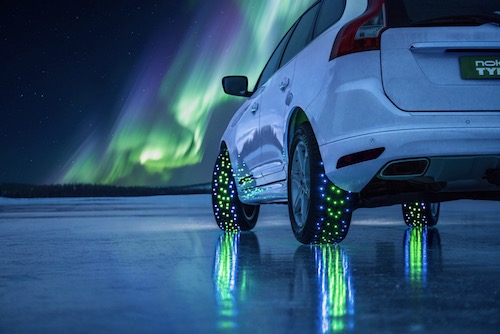Winter tires are only for use in winter which makes their use limited. Of course, nothing outperforms dedicated snow tires. With the winter tires holding the “Three Peak Mountain Snowflake” emblem signifying their approved use in severe winter conditions they allow for the ultimate handling on snow and ice. However, because winter tires should not be used after winter as they can severely damage roads, especially studded tires, it is important to respect the timeline of use and change out of winter tires in time. This is therefore the biggest disadvantage of winter tires, the fact that they are made only for the winter season and as such their use is limited to winter alone.
Winter tires exist both as studded tires and non-studded tires. If using studded tires their dates when they can be used becomes even more limited and in some States their use is even forbidden. In addition, it is complicated to know when to change into winter tires as well as out of them as winter does not come on a certain date and varies quite a bit from State to State. In general, it is recommended to switch out of winter tires (studded or non-studded) when temperatures stay consistently above 45 degrees Fahrenheit and the same hold through for changing into winter tires in the fall once the temperature stays consistently below 45 degrees Fahrenheit.
The reason for changing out of winter tires when the temperature rises and stays consistently above 45 degrees Fahrenheit is because with the specific rubber compound in winter tires which are made to stay flexible in cold weather (below 45 degrees Fahrenheit) they don’t fare well in temperatures above 45 degrees Fahrenheit. This is because they start to run hotter and hotter and eventually start to chemically degrade. This chemical degradation can actually cause the outside of the tire to become somewhat greasy and even decrease the gripping of the road, making it difficult to brake and increasing stopping distance.
If living in an area with severe winter weather your choice would be to either switch to all-season tires after the winter season or to maintain on set of tires throughout the year which would be possible with all-weather tires as they are approved for winter use. This is because the all-weather tires also hold the “Three Peak Mountain Snowflake” emblem signifying their approved use in severe winter conditions. This is the same emblem held by dedicated winter tires. If you own a SUV then you have the advantage that the 4-wheel drive allows for better traction.
The choice of dedicated snow tires or using one tire throughout the year is a decision to be made depending on the weather where you live. If the weather where you live is unpredictable and there is often a chance of temporary warming followed by true winter weather, you might want to consider equipping your car with all-weather tires as this eliminates the need to time when to change into winter tires.
For more information regarding all-weather tires, visit: nokiantires.com
